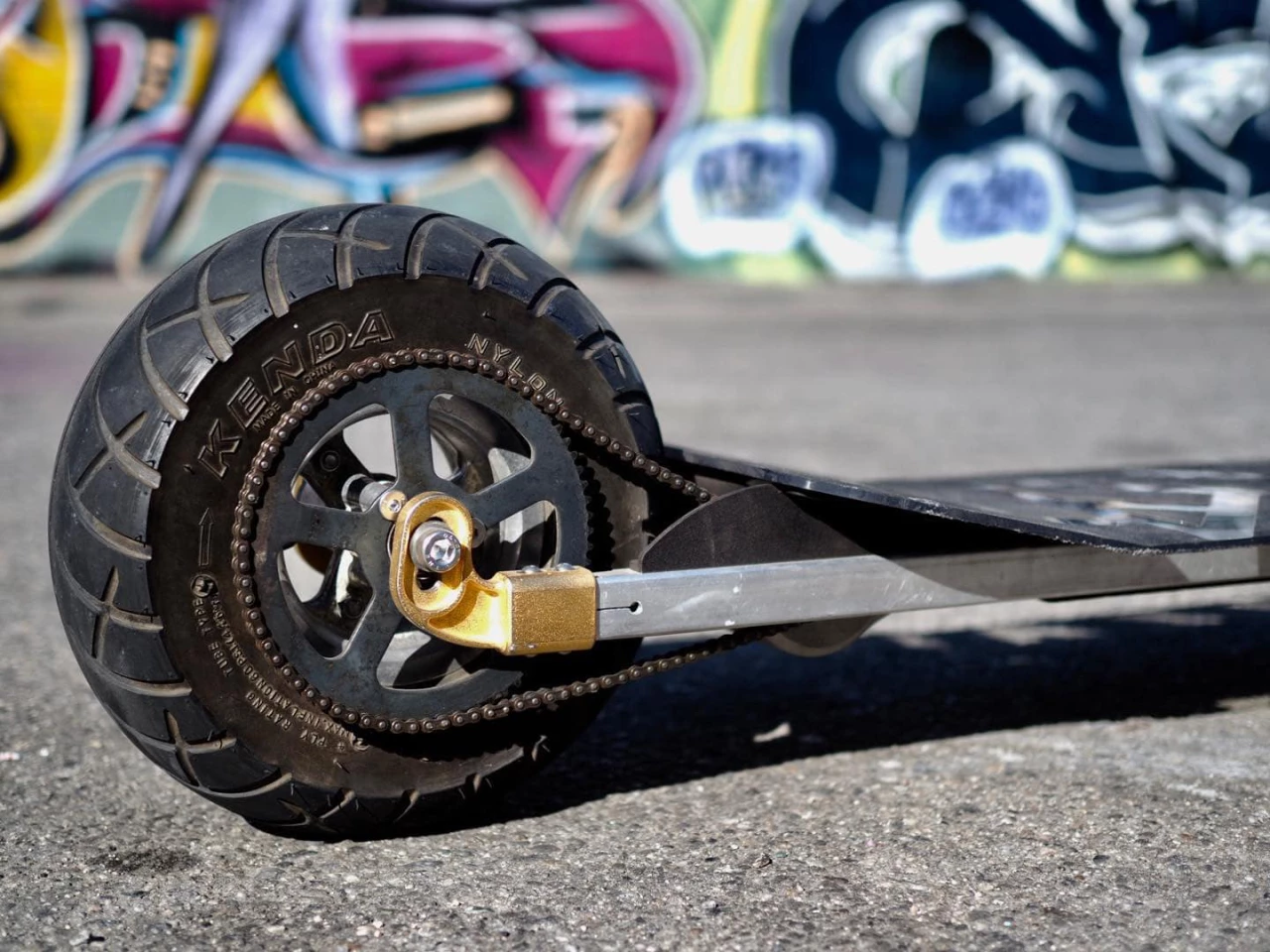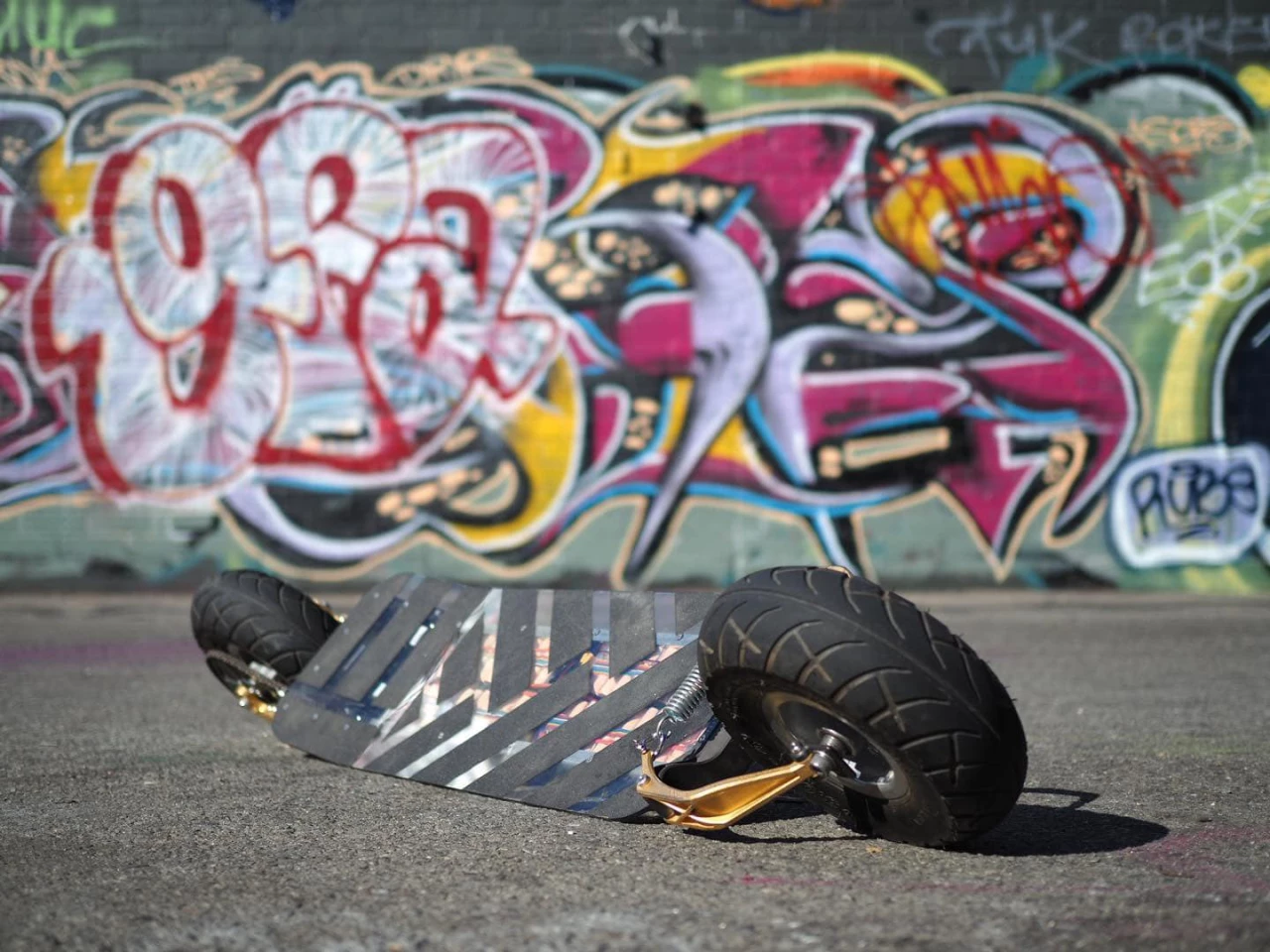There are now quite a few electric skateboards on the market, although they pretty much all have four wheels, are direct- or belt-drive, and top out at around 20 mph. The Speedboard is a little different, in that it has two wheels, a chain drive, and goes up to 30 mph (48 km/h).
Currently the subject of a Kickstarter campaign, the Speedboard was created by Los Angeles-based mechanical engineer David Jackson. Not a stranger to the world of crowdfunding, he was previously successful at Kickstarting the Coffee Joulies beverage-temperature-maintaining device.
But as far as the Speedboard goes … yes, instead of the usual two small wheels in the front and two in the back, it has just two larger wheels – one at either end. Thanks to a patented spring-loaded linkage mechanism, the front wheel can pivot up to 30 degrees relative to the rest of the board, automatically doing so as the rider leans into turns.
This setup is designed to let users carve through corners, snowboard-style. Additionally, thanks to the 10.3-inch Kenda pneumatic tires, they're also able to ride over relatively rough terrain such as gravel roads.

The chain-drive drivetrain was chosen to "maximize reliability and safety." It consists of a 9-tooth hardened steel pinion mounted on the motor shaft, driving a 70-tooth steel sprocket on the rear wheel via a steel chain with a tensile strength of 1,300 lb (600 lb).
Jackson chose the 30-mph top speed in order to let riders keep up with the other motorized traffic, as opposed to constantly getting passed and potentially cut off. Riders control that speed and activate the brakes using a handheld radio remote control unit.
The rear wheel is driven by a 4,000-watt motor, which is in turn powered by an array of 52 lithium-ion batteries located inside the deck. These can be removed and carried as four separate battery packs, allowing the board to be taken aboard airliners. One charge should reportedly be good for a range of 16 to 24 miles (25 to 38 km), depending on user weight and riding style.

Aircraft-grade 6061-T6 aluminum is used for the board's rails, with the deck consisting of transparent polycarbonate. In its current form, the whole thing weighs a claimed 26 lb (12 kg).
Should you be interested in getting a Speedboard, a pledge of US$1,999 is required – that will include a helmet, and free shipping within the US (the planned retail price is also about $1,999, but without the helmet and shipping). Assuming it reaches production, deliveries are estimated to begin next May.
A previous attempt at a two-wheeled electric skateboard, the Yiiboard, failed to meet its Indiegogo funding target.
The video pitch below shows some Speedboard prototypes in action.
Source: Kickstarter








